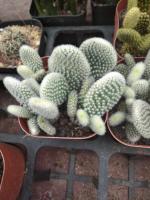How to Sketch Plants and Trees
Sketching plants and trees is a fun and relaxing way to connect with nature and improve your drawing skills. Whether you’re an experienced artist or a beginner, there are a few tips and tricks that can help make your sketches look more realistic and lifelike. Here are some steps to follow:
Step 1: Observe and study
The first step in sketching plants and trees is to observe and study them. Take some time to look at the plant or tree you want to sketch, paying attention to its shape, texture, and color. Notice the way the leaves or branches are arranged, and the way they interact with other plants and objects in the environment. Try to capture these details in your sketches, as they will help bring your drawings to life.
Step 2: Choose your materials
Next, it’s important to choose the right materials for your sketches. Most artists prefer to use pencils or charcoal for sketching, as they are easy to use and can be easily erased or smudged. However, you can also use colored pencils or pens to add color and depth to your sketches. Consider experimenting with different materials to find the ones that work best for you.
Step 3: Start with the basic shapes
When you’re ready to start sketching, begin by drawing the basic shapes of the plant or tree. This will help you establish the overall structure and proportions of your sketch. For example, if you’re sketching a tree, you might start by drawing a rough outline of the trunk and branches, and then add the leaves and other details later on.
Step 4: Build up the details
Once you have the basic shapes down, it’s time to start building up the details of your sketch. Use your observations and studies from Step 1 to guide the way you add texture, shading, and other key details. Take your time and be patient – the more detail you add, the more realistic your sketch will look.
Step 5: Add color and texture
Finally, add color and texture to your sketch to bring it to life. Use colored pencils or watercolors to add depth and variation to your sketches, or use shading and cross-hatching techniques to create texture and dimension. Again, take your time and experiment with different techniques to find what works best for you.
Sketching plants and trees can be a rewarding and relaxing activity for artists of all skill levels. By following these simple steps and practicing regularly, you can improve your skills and create beautiful, lifelike sketches that capture the natural beauty of the world around you.

 how many times do yo...
how many times do yo... how many planted tre...
how many planted tre... how many pine trees ...
how many pine trees ... how many pecan trees...
how many pecan trees... how many plants comp...
how many plants comp... how many plants can ...
how many plants can ... how many plants and ...
how many plants and ... how many pepper plan...
how many pepper plan...






























